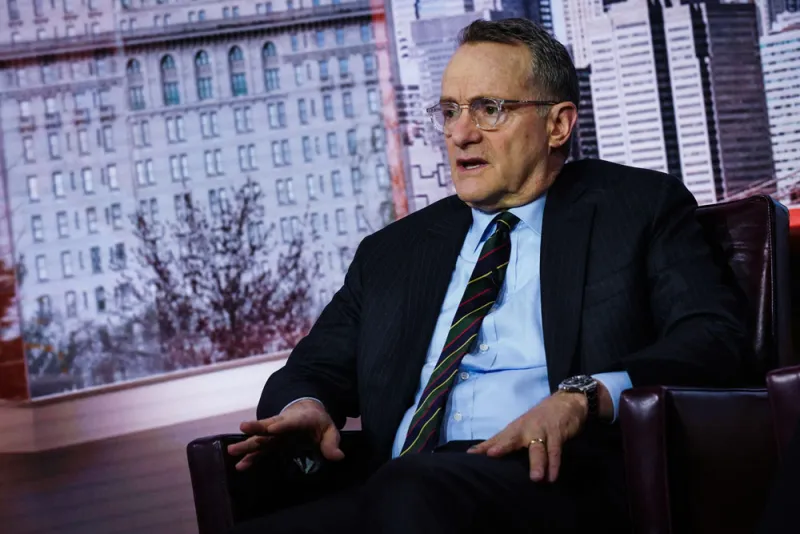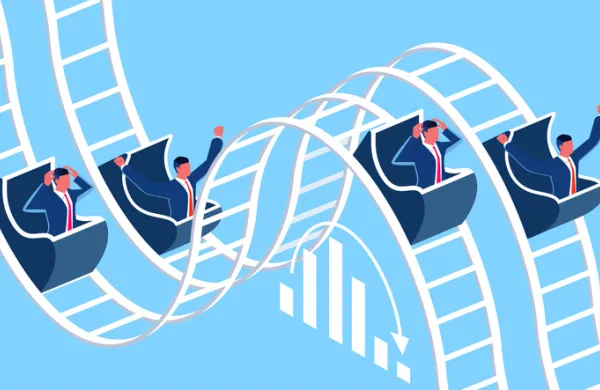As the market awaits the results of next week’s Federal Open Market Committee meeting, Oaktree Capital Management co-chairman Howard Marks is warning that renewed monetary stimulus could have ramifications beyond stock market gains.
In a client memo published Friday, Marks addressed the pros and cons of interest-rate cuts by the U.S. Federal Reserve, describing the central bank’s role in the market as “complex, multi-faceted, and characterized by a great deal of on-the-one-hand-but-on-the-other-hand.”
“Many people take Fed actions at face value,” he wrote. “When the Fed cuts interest rates, as the consensus expects it to do soon, investors take that as a ‘buy’ signal.” The thought process, as Marks described it, is that rate cuts cause economic stimulus, which strengthens gross domestic product, which leads to higher corporate profits and higher stock profits.
“But there’s much more to the story,” Marks argued. “Digging deeper, one should ask, ‘Why is the Fed cutting rates?’ The answer, of course, is that the Fed anticipates economic weakness (or sees it taking place) and wants to ward it off.”
There is evidence that lower interest rates can help ward off economic weakness, as Marks lays out in his memo. By reducing the cost of borrowing, rate cuts encourage spending by consumers and investment on the part of businesses, Marks explained. Other benefits include increased hiring, reduced unemployment, wage inflation, and enhanced corporate profits due to reduced interest on debt. Lower rates also drive investors to take on more risk, which increases the availability of financing for ventures “that might otherwise find capital in short supply,” Marks wrote.
“Finally, rate cuts are taken as a predictor of further rate cuts, implying more of all the above,” Marks continued. “When they’re moving in a positive direction, the things described above contribute to the appearance of a virtuous cycle.”
[II Deep Dive: Howard Marks Questions the Long Game of U.S. Debt Explosion]
However, there are also “ways in which low rates are undesirable and potentially harmful,” Marks wrote. These include the possibility that too much monetary stimulus leads to excessive inflation, which imposes a hardship on people who live on fixed incomes. Low rates can also penalize savers, lead to investment in “undeserving companies and shaky securities,” encourage “excessive leverage,” and create asset bubbles.
“Finally, but very importantly, when interest rates are low, central banks don’t have at their disposal as much of their best tool for stimulating economies: the ability to cut rates,” Marks argued.
In addition to these pros and cons, Marks noted that there’s the risk of the Fed “being unresponsive or over-responsive, along with the risk of doing too much or too little, and of doing it too soon or too late… Not only does the Fed have to figure out what actions it should take to keep the economic machine humming, but also whether people will react positively and trust in them to work.”
The Oaktree Capital co-chairman concluded by returning to a memo he published last month, when he questioned whether it’s “even desirable” for the Fed’s goal to be preventing recessions.
“Should we be happy to see the Fed trying to prolong the economic expansion and the bull market when they’re already the longest in history?” he asked. “Should it try to produce perpetual prosperity and permanently ward off a correction? Are there risks in trying to do so? It all depends on which hand is doing the weighing.”







